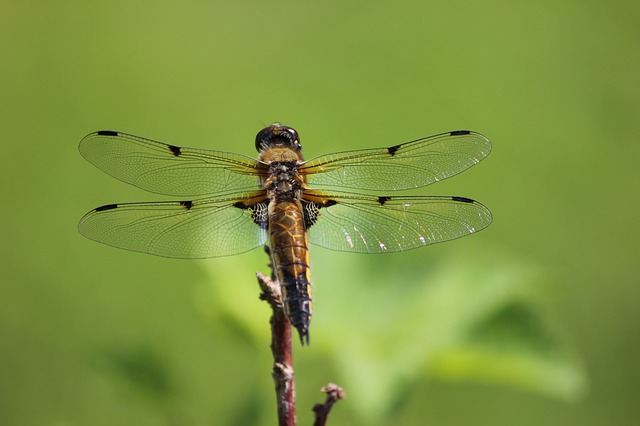Your questions answered. Each week we pick a question asked by our readers and answer them using the help of our resident experts and occasionally guest scientists and researchers eager to resolve your doubts related to the flora and fauna of India. If you have a question, send to contact@indiasendangered.com, or reach us on our social media handles – Twitter, Facebook.
The Malabar Civet was declared possible extinct in 1978. Nine years later, it was rediscovered and the conservation status marked as ‘Critically Endangered’. But the live animal has never been photographed in the wild. The evidence of its existence is based on a handful of museum specimens. Many scientists and researchers have tried to spot this elusive mammal in its natural habitat but have returned empty-handed.
Civets are also known as Toddy Cats and are carnivorous mammals. There are nine species of civets found in India. This include – Large Indian Civet, Small Indian Civet, Masked Palm Civet, Brown Palm Civet, Asian Palm Civet, Small toothed Palm Civet, Large Spotted Civet, Binturong and the Malabar Civet.
Also Read: Rare Civet Finds its Way to Jamia Milia Islamia University
The Malabar Civet is a nocturnal animal. Its home range is said to be from Kanyakumari in the extreme south, to Honnavar in Karnataka in the Western Ghats. Locals believe that the civet forages at night and hides in the scrubby forests or the cashew plantations during the day making it difficult to spot.
In 2010, researchers Divya Mudappa and Nandini Rajamani set out to specifically look for the Malabar Civet in its home range of the Western Ghats. The researchers in their study noted that ‘it has never been sighted with certainty in the wild and its ‘known’ ecology is based on speculation, not fact.’ But the field study did not reveal any sighting of this rare civet. They did encounter on occasions, the presence of other civet species especially the small Indian civet which looks similar but is smaller in size.
In the absence of observations of live animals, scientists only have scattered notes in the literature and about a dozen museum specimens labelled as Malabar civet to work with. These specimens are in the Natural History Museum, London, the Zoological Survey of India, Bombay Natural History Society, Chennai Museum, and Calicut University. But most of them have no definite documentation of the area from which these skin specimens were recovered from.
In a Conservation India article, Divya Mudappa writes that there has always been stray reports of sighting of the Malabar Civet from here and there but no direct evidence or photograph. In the 1980s, few skins were recovered from a small town in Kerala, which were said to be that of the Malabar civet, but it still remains a mystery.
In another article by Janaki Lenin for The Hindu from 2010, the noted author writes that they might have seen a pair of Malabar Civet enjoying a feast of leftover chicken bones in an elephant trench surrounding their building. But as they did not want to disturb the animals with lights and flashes, they could not take a photograph. Based on observations they were optimistic, but still unsure whether they indeed saw the mythical mammal that day.
According to Mudappa, some distinguishing characters of the Malabar civet are a crest of black hair running along the back and over the tail ending in a broad black tail-tip, and a prominent necklace of black and white bands on the neck. However, because these are characteristics also seen on the Indian civet, it might need trained scientists eyes to tell the difference.
There are many theories around the Malabar civet because of the lack of photographs. Some experts feel that they could be so rare and in limited numbers scattered around their home range, that it is hard to find them. Others feel the Malabar civet is only a sub-species of the Large Spotted civet that got misrepresented as a distinct species early on. Mudappa and Nandini also feel that the civets could have been common earlier but were hunted to near extinction for the famous civet musk.
Other Questions Answered here – Does India have a Healthy Population of the Himalayan Brown Bear?
No one knows for sure if Malabar civets are indeed one of the rarest small mammals on earth or a type of civet which has been misidentified. Without photographic evidence of a live, thriving animal, the mystery remains.
Image via The Hindu






Couple of year ago, one of our members in a NGO here sent me a roadkill. It was found on the road going towards Thirumoorty Hills away from the reservoir. This is the foothills of the Anaimlai Tiger Reserve (ATR) and I reside close by. I examined it very carefully and came to a conclusion that it was a roadkill of a Malabar large-spotted civet or Malabar civet cat (Viverra civettina). I posted this picture on my Facebook. The very same day I got a call from the Forest Department, to verify where I had seen it. Of course, I had not seen it, but the image sent by our volunteer was what I had posted. There is a stuffed museum specimen in Top Slip, ATR. This is looks pretty old.
I will post some pictures of the Malabar civet cat:
https://www.facebook.com/photo.php?fbid=683737501995981&set=pb.100010792122505.-2207520000..&type=3&size=669%2C960
One more:
https://www.facebook.com/photo.php?fbid=683737435329321&set=pb.100010792122505.-2207520000..&type=3&size=669%2C960
Another view:
https://www.facebook.com/photo.php?fbid=683737358662662&set=pb.100010792122505.-2207520000..&type=3&size=669%2C960